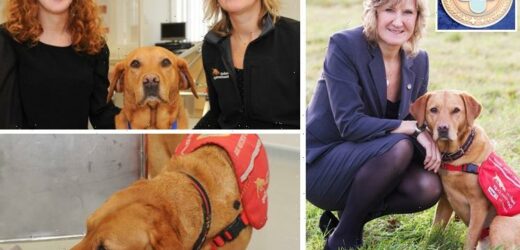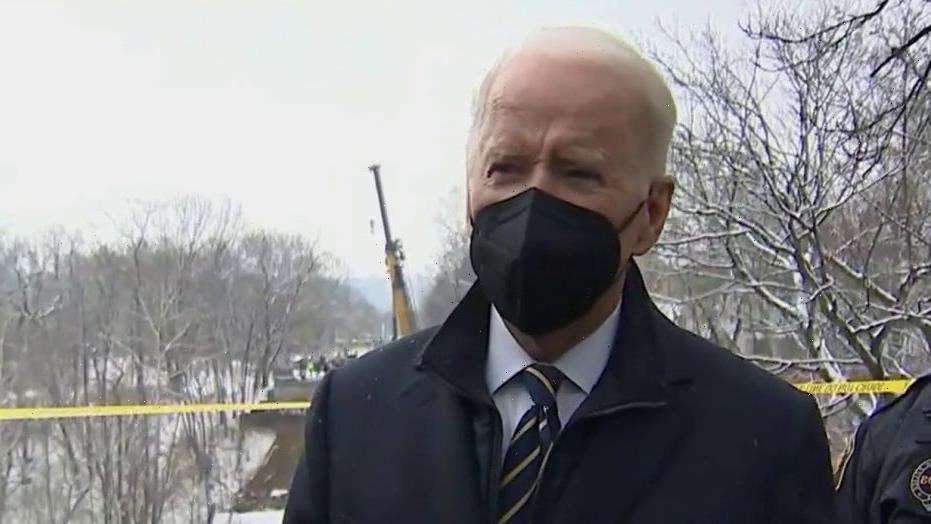THIS is the dog that can sniff out cancer in seconds – and is revolutionising the way we diagnose the disease.
Twelve-year-old Daisy has detected more than 550 cases of cancer in trials and even saved her owner’s life.
With the ability to smell the equivalent of one drop of blood in two Olympic-sized swimming pools of water, dogs like Daisy could be our most powerful weapon yet in the fight against cancer.
We told on Thursday how border collie Bessie alerted her owners Philip and Paula Wood to the fact their two-year-old daughter Philippa had leukaemia.
And last week Charmed actress Shannen Doherty, 45, claimed her German Shepherd Bowie detected her breast cancer.
But Daisy is the first of a team of specially trained dogs who diagnose cancer day in, day out.
The Sun joined Daisy at her workplace in rural Buckinghamshire, near Milton Keynes, to see her amazing nose in action.
Here, in a specially designed lab, Daisy sniffs samples taken from patients. Each contains 0.5ml of urine — such a tiny amount you can barely see it.
Samples from patients with prostate, bladder or kidney cancer are arranged around a carousel with healthy samples.
But Daisy can read them like a book. She sniffs each test tube for less than a second and detects the cancerous sample in well under a minute. Once she finds it, she sits stock still, staring her handler in the eye.
With a 93 per cent hit rate, her speed and accuracy is astonishing.
Daisy’s owner Dr Claire Guest is the chief executive of Medical Detection Dogs, a pioneering charity carrying out invaluable research into how dogs can help diagnose disease.
She explains: “I had a friend whose pet dalmatian kept pawing at a mole on her leg. The dog just wouldn’t leave the mole alone – it was constantly sniffing at it. Eventually my friend went to get herself checked out by a GP, who diagnosed a malignant melanoma.
“It was this story, and others like it, that convinced me dogs could smell cancer.”
Working with Dr John Church, a leading medic who shared her theory, Claire adopted a fox red labrador puppy — Daisy — and started to train her.
Daisy saved my life by detecting my cancer
At just 12 weeks old, Daisy began sniffing samples — and is still carrying out her groundbreaking work more than a decade later.
Claire, 52, says: “Daisy was the pioneer. The work she has shown is possible is now being replicated in other dogs, and we are building up a huge body of evidence that can be used by scientists and doctors.
“We know early diagnosis is the key to survival when it comes to cancer, and that is what we are passionate about. It is lifesaving.”
Claire knows better than most just how valuable early diagnosis can be.
In 2009, she was diagnosed with breast cancer — after Daisy alerted her that something was wrong.
At the time, Daisy was working with urine samples for prostate cancer, and had just finished a long day of sniffing.
Claire took her out for a run to blow off some steam, but found that Daisy wouldn’t stop jumping up at her chest.
She explains: “It was very strange — she just kept jumping up at me and staring at me with her great big eyes.
“Afterwards it felt a bit like a bruise where she had been jumping up at me, which didn’t make sense as she had not hit me hard.
“I went to the doctors to get it checked out and they carried out a mammogram. It showed that really about as far back as you can go in the tissue, I had breast cancer.
“It was so deep that if Daisy hadn’t drawn my attention to it I wouldn’t have known about it until it was a really big tumour. By the time it had grown enough to see, my chances would not have been good.
“I was 46 at the time so it was a good four years before I would have had a routine mammogram.
“As it was, I caught it early and was able to get the right treatment that got rid of the cancer completely. Daisy saved my life.”
The team still don’t know exactly how Daisy did it — and are now carrying out research in an attempt to prove that breast cancer can be detected in an odour on the breath. Her own experience increased Claire’s zeal for the dogs’ work, and she now believes there are few limits on what Daisy could potentially do.
RELATED STORIES
HAMMER HORROR Bloodsoaked mum left with gaping hole in her head after man jumped out of a car and viciously attacked her with a CLAW HAMMER
Cops find body in search for boy, 16, last seen ‘tripping' on ‘N Bomb’ drug & running naked near river
Man who runs magic wand shop in Huddersfield BANS Harry Potter fans for not taking magic seriously
Pop brat copies rival Orlando Bloom by stripping off and letting it all hang out with model girlfriend Sahara Ray
She says: “At the time that it happened, there was a lot of scepticism about the work we were doing.
“People didn’t think it would work, or that it would have a value. I suppose it was starting to seep through to me but what I went through only increased my passion for the work. Perhaps it happened for that reason — you never know.”
Daisy’s relationship with Claire is clearly special — and the dog’s eyes barely leave her owner’s face all the time we are talking.
It’s also obvious Daisy loves her work, bouncing into the lab as happy as a puppy.
Claire says: “Daisy is such a loyal dog, she is my best friend. Even as a puppy, she just used to trot along beside me.
“I don’t ever remember training her, I must have done, but she was always so good and gentle and calm. I don’t think I ever had to tell her off for anything, and she has stayed like that all her life.
It doesn’t matter where you take her, she is totally reliable.”
The charity is currently running two major trials, one in co-ordination with Milton Keynes University Hospital into the detection of prostate, bladder and kidney cancer using urine samples and the second into breast cancer using breath samples.
A total of 25 dogs are working on the cancer trials with different dogs used for each.
The research is potentially game-changing. For example, the current blood test for prostate cancer — the PSA test — has a 75 per cent false positive rate, meaning that three out of four men who test positive for prostate cancer don’t actually have it.
But Daisy and dogs like her have only an eight per cent false positive rate. This means they could potentially save healthy men from having invasive and unnecessary biopsies. And early detection could save lives.
Currently, prostate, lung and bowel cancers together account for more than half of all new cases in men.
Bladder and kidney cancer meanwhile accounted for almost 10,000 deaths in 2014.
I can’t see any limit to what the dogs could do
Claire said: “Our dogs have higher rates of reliability than most of the existing tests. We know their sense of smell is extraordinary. They can detect parts per trillion, that’s the equivalent of one drop of blood in two Olympic-sized swimming pools.
“We should not be turning our backs on these highly sensitive bio detectors just because they have furry coats and waggy tails. Britain has one of the worst rates of early cancer detection in Europe.
The NHS needs to be bolder about introducing new innovative methods to detect cancer in its early stages.”
Although she doesn’t look her 12 years, Daisy is moving into late middle age for a dog — and won’t be working forever.
But she has paved the way for a generation of cancer detection dogs to follow in her pawprints.
Claire adds: “At the moment I can’t see any limit to what the dogs could do. There are so many cancers that are still killing people, which could be diagnosed so much more easily with the help of dogs.
“With a breath sample, a urine sample or a faecal sample, what could be easier really?
“Treatments are improving as we know, as long as you get diagnosed in time.”
And it’s not just cancer: Claire’s dogs are currently working on a trial to identify Parkinson’s disease at a very early stage.
In 2014, Daisy was awarded the Blue Cross medal — the highest honour for pets. Steve Goody, deputy chief executive of pet welfare charity The Blue Cross, said: “The medal is awarded to animals that have changed or saved someone’s life.
“All the judges on the medal panel were really touched by Daisy’s remarkable story and the incredible difference she has made.
“Cancer affects the lives of thousands of people and Daisy has made a huge contribution to the diagnosis and early treatment of cancers.”
As Daisy poses for The Sun’s photographer, she is as professional as ever — waiting more patiently than many celebrities.
Claire adds: “Yes Daisy is unique — she just has such a beautiful nature. There will only ever be one Daisy in that sense.”
Source: Read Full Article
















